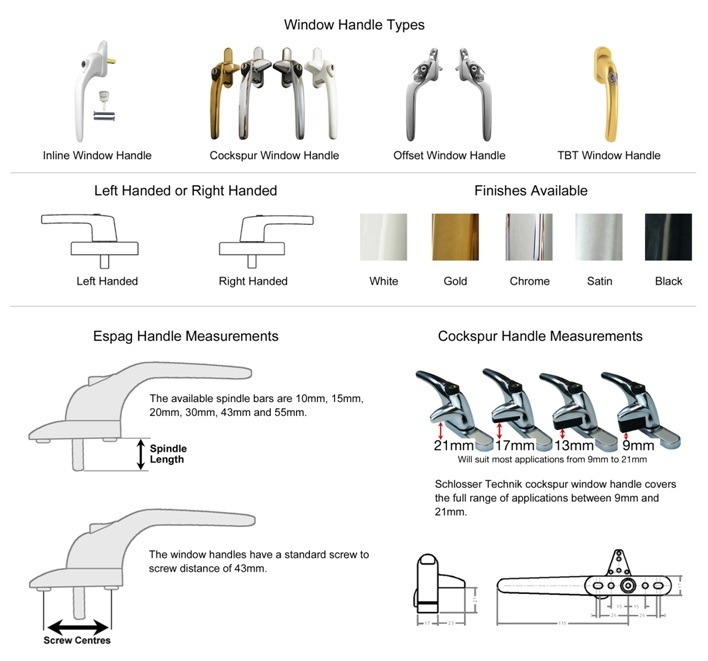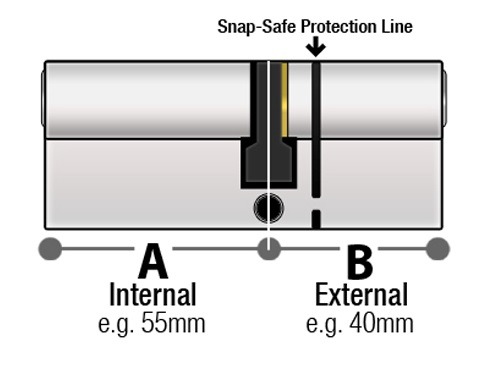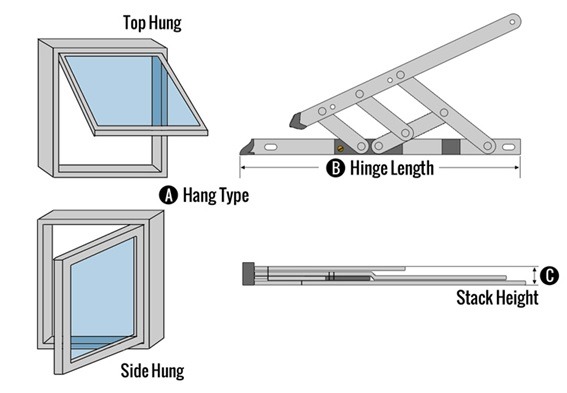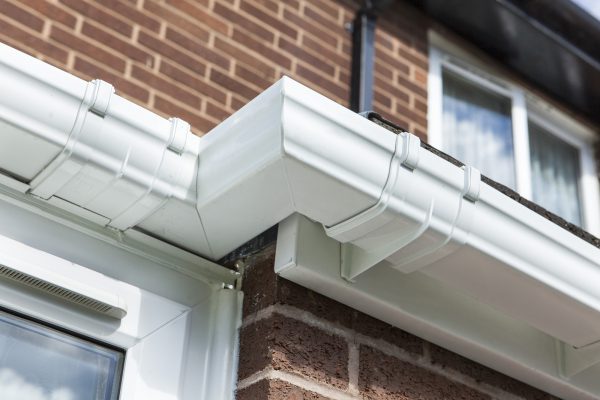REPLACEMENT HARDWARE: YOUR GO TO GUIDE
From replacement door and window handles to new hinges and locks – we sell a range of replacement hardware. Here’s everything you need to know to ensure you buy the right thing from us.
WINDOW HANDLE IDENTIFICATION GUIDE
Our guide below will help you choose exactly the correct window handle for your window:

DOOR HANDLE MEASURING & IDENTIFYING GUIDE
The following guide can be used to help identify or correctly measure your UPVC/Composite Door Handle.

To ensure you buy the correct size door handle, it is vital that you know the correct measurements. There are two critical dimensions when measuring your door handle – the PZ Dimension and the Screw to Screw Dimension.
a. THE PZ DIMENSION
Measured from the centre of the spindle (follower) hole to the centre of the euro cyclinder hole.
b. SCREW TO SCREW (FIXING CENTRES)
Measured from the centre of the top fixing screw hole to the centre of the bottom fixing screw.
c. TOP SCREW TO SPINDLE
Measured from the centre of the top screw hole to the centre of the spindle (follower) hole.
d. OVERALL BACK PLATE
The length of the back plate.
UPVC DOOR LOCK MEASURING GUIDE

When trying to identify any multi-point lock, there are 2 main critical dimensions required (always measured in millimeters)
What are the 2 critical dimensions?
-
THE PZ DIMENSION
Measured from the centre of the spindle (follower) hole to the centre of the euro cylinder hole.
-
THE ‘BACK SET’ DIMENSION
Measured from the front of the lock face plate to the centre of the spindle (follower) hole.
EURO CYLINDER MEASURING & IDENTIFYING GUIDE
The following guide can be used to help identify or correctly measure your Euro Cylinder.

In order to correctly measure a Euro Cylinder there a two sizes that you require, the internal size and the external size.
a. THE INTERNAL SIZE
Measured from the internal side to your door facing inwards to your home, to the centre of the black rotating clip (cam).
b. THE EXTERNAL SIZE
Measured from the external side of your door facing outwards to your property, to the centre of the black rotating clip (cam).
FRICTION HINGE MEASURING GUIDE
Our 3 step guide below will help you choose exactly the correct hinge for your window…
-
HANG TYPE
Is your window Top Hung or Side Hung?
-
HINGE LENGTH
Measured to the closest inch e.g. 12″
-
STACK HEIGHT
13mm or 17mm (Not able to measure your stack height? Read below…)

NOT ABLE TO MEASURE YOUR STACK HEIGHT?
If you are unable to measure the stack height of the hinge then you can purchase some stack packer caps. The caps simply clip on the hinge and convert the hinge from a 13mm stack to a 17mm stack. We recommend fitting 3 packers per hinge (so a pair of hinges would require 6 packer caps).
HARDWARE HANDING
The following guide can be used to help identify which hand product you require:










